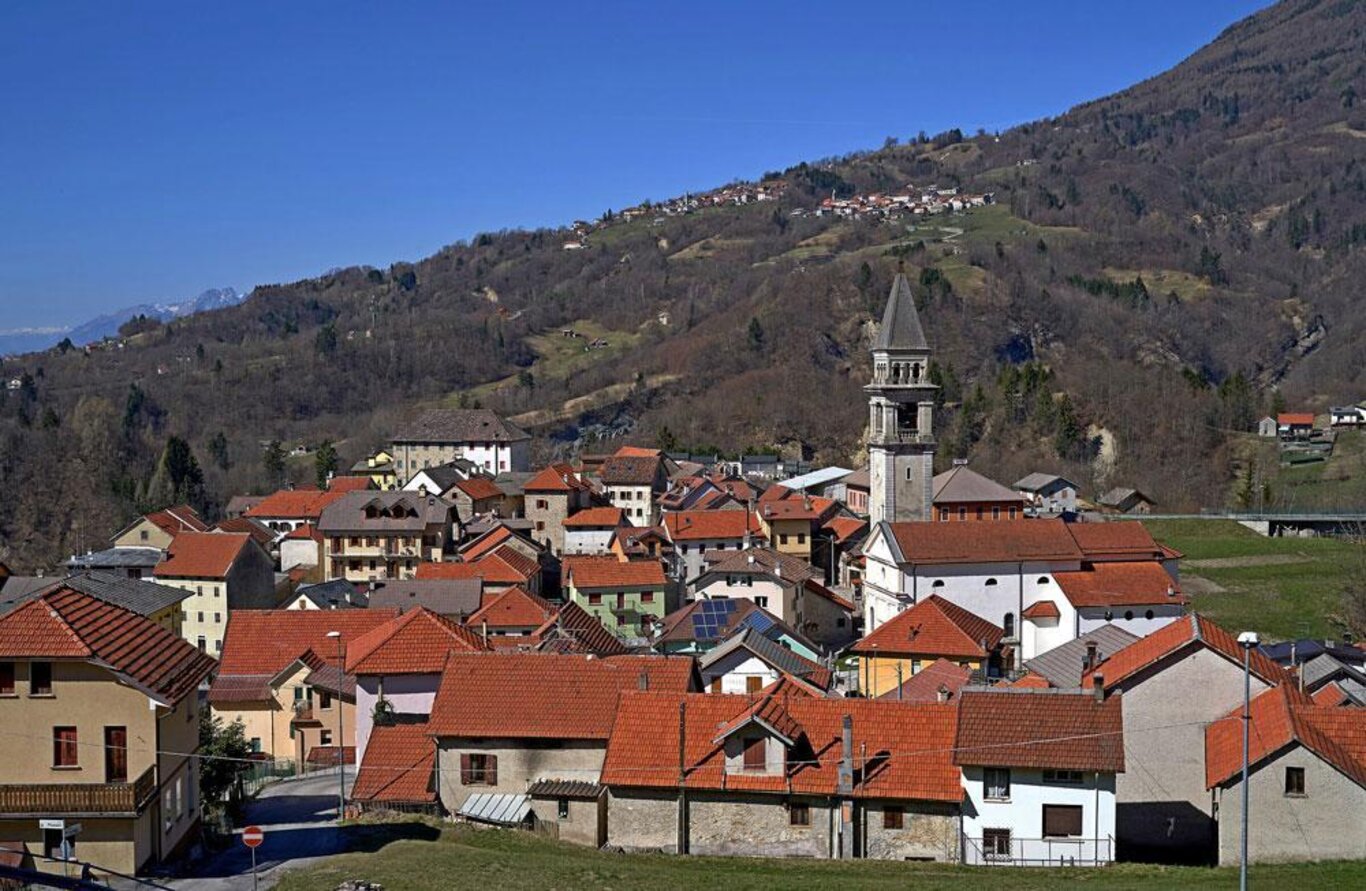The archaeological excavations date the first human settlements in the territory of Chies d’Alpago to the Iron Age: Celtic populations, perhaps not even stable in the area, which during the Roman era were included in the region of Noricum. The first villages arose following the construction of the bastion of Bastia and two castles: one near the lake and another in Soccher. It should be noted that at that time the lower part of Alpago was a very marshy and unhealthy area, and therefore the families of the border inhabitants began to build the first villages further up, among which were "Clessum", "Codenseanum", "Lamosanum", "Alpagos". Following the barbarian invasions, the Ostrogoth domination replaced the Roman one, and subsequently the Lombard. The fleeing populations took refuge in the mountains in the area of Mont and in the Salatis valley. The construction of the Bongaio castle on the promontory between the Tessina valley and the Tesa valley should date back to this period. The Lombards, who later invaded Alpago, initially erected the "fara," which was the union of families to work the land in common, near Farra, but soon merged with the local populations. This period saw the administration of common goods under the form of the "Regola," still practiced today throughout the municipality of Chies. The administrative center of all Alpago during the Lombard period was the "Plebs," or Pieve, where the parish priest and the dean, the political and military leader, resided. From this era, the ruins of the church of San Daniele remain, in the eponymous locality, along with its magnificent stone altar preserved at the church of Palughetto.
Following the conquest of Charlemagne, the territory of Chies also came under the Holy Roman Empire and followed its fate until its disintegration. During the communal age, all of Alpago was governed by Belluno and in 1324 it was elevated to a county under the administration of Andrighetto da Bongaio, who governed from the eponymous castle near the hamlet of Alpaos: in 1348 a strong earthquake caused its collapse, and shortly thereafter the bishop of Belluno received the investiture of the county. In 1404, the government of the Serenissima took hold, and, after its fall, the Napoleonic rule. Napoleon suppressed the "Regole" everywhere in 1806, entrusting their assets to the municipalities, except for the Regole of Chies, which were allowed to retain the civic use of their heritage. Subsequently, the territory of Chies was under Austrian rule until 1866, when it became part of the Kingdom of Italy. In 1873, a powerful earthquake centered right in Alpago razed much of the municipality's housing to the ground. A brief period of Austrian domination occurred during the Great War, in 1917, while during the Nazi occupation from 1943 to 1945, Chies was directly incorporated into the "Reich".
Lamosano had its curate already by the end of the 16th century, and in 1629 the parish of San Lorenzo was established; Chies separated from the Pieve, elevating itself to a curacy in 1770, but the parish was established only in 1949.
When the municipality of Chies d’Alpago was established, it chose to depict a sheep in a green field on the left side of the coat of arms, symbolizing that pastoralism was the predominant economic activity, and placed on the right the tower of the castle of Bongaio, as a reminder of the glory of the County of Alpago, in a blue field, with a silver stripe in the background symbolizing the Tesa stream.
